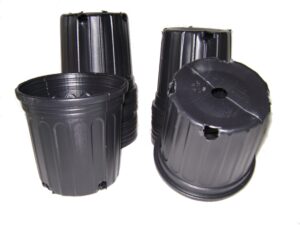
Yellow flower weeds are a common sight in lawns, gardens, and natural areas around the world. While some may appreciate their vibrant blooms, others see them as unwanted invaders that compete with desirable plants for resources and space. Identifying these weeds is the first step in controlling them effectively. In this article, we’ll explore the characteristics, identification, common types, impacts, and control strategies for yellow flower weeds, helping you maintain a healthy and beautiful landscape.
I. Introduction to Yellow Flower Weeds
Definition and Common Characteristics Yellow flower weeds are herbaceous plants that produce yellow-colored flowers as part of their reproductive cycle. These weeds often exhibit rapid growth and prolific seed production, allowing them to spread quickly in favorable conditions.
Importance of Identifying Yellow Flower Weeds Identifying yellow flower weeds is essential for effective weed management. By knowing which species are present in your landscape, you can implement targeted control strategies to prevent their spread and minimize their impact on desirable plants.
Overview of Common Types of Yellow Flower Weeds Yellow flower weeds come in various shapes and sizes, with some species being more problematic than others. Understanding the characteristics and habitats of common types of yellow flower weeds can help you better manage them in your lawn or garden.
II. Identification of Yellow Flower Weeds
Physical Characteristics Yellow flower weeds can be distinguished by their flower structure, leaf shape, and stem characteristics. Pay attention to details such as petal arrangement, leaf margins, and growth habits when identifying these weeds.
Habitat and Growing Conditions Yellow flower weeds have specific habitat preferences and environmental requirements. Understanding where they thrive can help you target control efforts more effectively and prevent their establishment in vulnerable areas.
III. Common Types of Yellow Flower Weeds
Dandelion (Taraxacum officinale) Dandelion is one of the most recognizable yellow flower weeds, with its bright yellow flowers and toothed leaves. This perennial weed can be found in lawns, fields, and disturbed areas, spreading rapidly through wind-dispersed seeds.
Buttercup (Ranunculus spp.) Buttercup weeds are characterized by their glossy yellow flowers and deeply lobed leaves. These annual or perennial plants prefer moist habitats such as meadows, pastures, and woodland edges, where they can form dense patches.
Creeping Woodsorrel (Oxalis corniculata) Creeping woodsorrel is a low-growing weed with yellow flowers and heart-shaped leaves. This perennial herbaceous plant spreads by creeping stems and can be found in lawns, gardens, and waste areas, where it competes with turfgrass and ornamental plants.
IV. Impacts of Yellow Flower Weeds
Ecological Effects Yellow flower weeds can have negative impacts on ecosystems by outcompeting native plants for resources and disrupting ecological processes. Their rapid spread and prolific seed production can alter habitat structure and reduce biodiversity.
Economic Consequences Yellow flower weeds can cause economic losses in agriculture, horticulture, and landscaping by reducing crop yields, lowering land value, and increasing control costs. Controlling these weeds requires significant time, effort, and resources.
Human Health Concerns Some yellow flower weeds pose health risks to humans and animals. Contact with certain species can cause skin irritation, allergic reactions, or toxicity if ingested. Proper precautions should be taken when handling or removing these weeds.
V. Control and Management of Yellow Flower Weeds
Cultural Control Methods Promoting a healthy and dense turfgrass stand through proper lawn care practices can help suppress yellow flower weeds and prevent their establishment. Practices such as mowing at the correct height, watering deeply but infrequently, and fertilizing appropriately can create unfavorable conditions for weed growth.
Mechanical Control Methods Hand pulling, hoeing, and cultivation are effective mechanical control methods for small infestations of yellow flower weeds. Mowing and cutting can also help manage weed populations in larger areas, preventing seed production and reducing weed vigor.
Chemical Control Methods Selective herbicides can be used to target specific yellow flower weeds without harming desirable plants. Pre-emergent herbicides can prevent weed seeds from germinating, while post-emergent herbicides can kill established weeds. It’s essential to read and follow label instructions carefully when using herbicides to ensure safe and effective application.
In conclusion, yellow flower weeds are a common nuisance in lawns, gardens, and natural areas, but with proper identification and management, their impact can be minimized. By understanding the characteristics, habitats, and control strategies for these weeds, you can maintain a healthy and beautiful landscape free from unwanted invaders.






